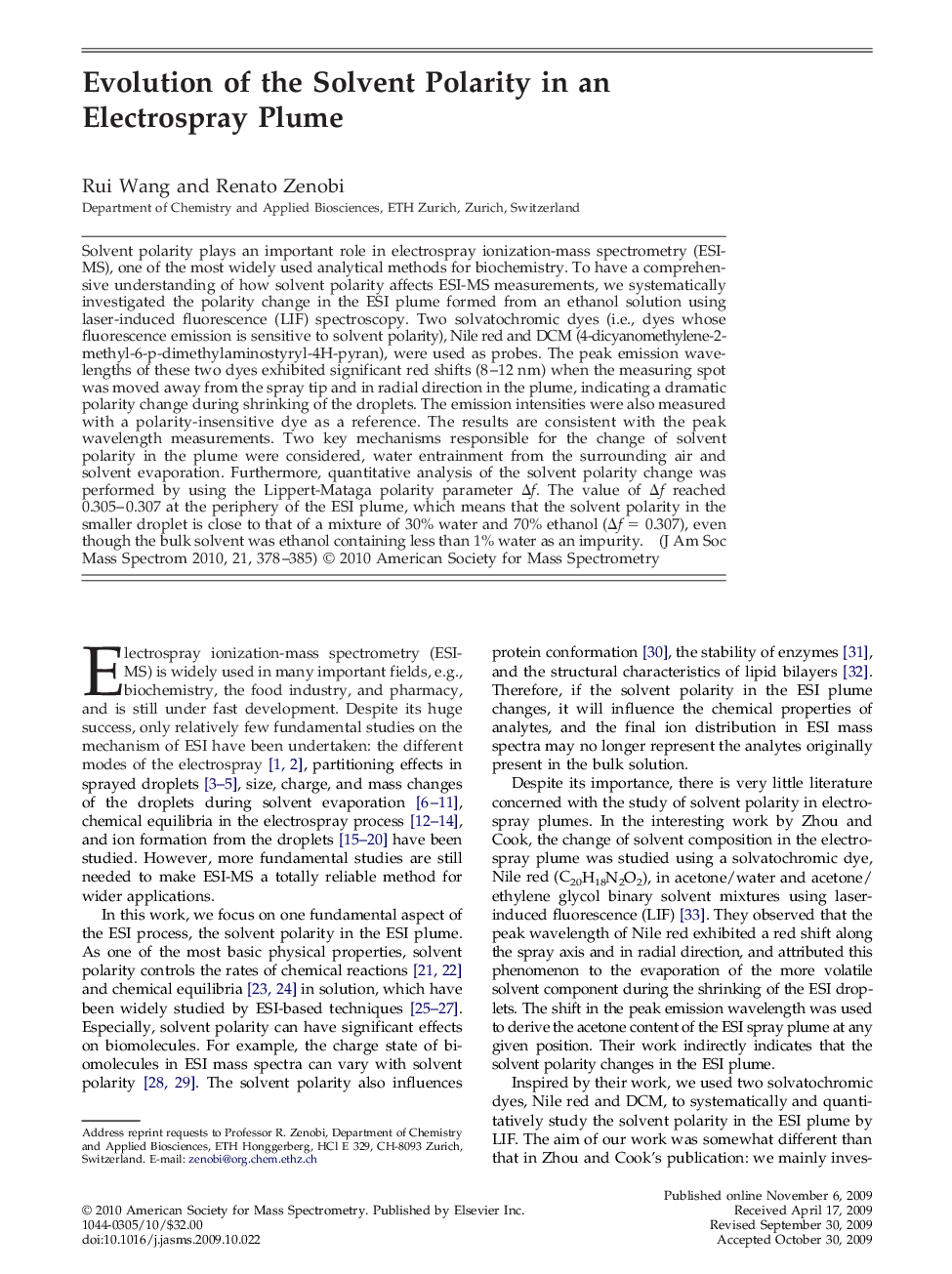| Article ID | Journal | Published Year | Pages | File Type |
|---|---|---|---|---|
| 1196346 | Journal of the American Society for Mass Spectrometry | 2010 | 8 Pages |
Solvent polarity plays an important role in electrospray ionization-mass spectrometry (ESI-MS), one of the most widely used analytical methods for biochemistry. To have a comprehensive understanding of how solvent polarity affects ESI-MS measurements, we systematically investigated the polarity change in the ESI plume formed from an ethanol solution using laser-induced fluorescence (LIF) spectroscopy. Two solvatochromic dyes (i.e., dyes whose fluorescence emission is sensitive to solvent polarity), Nile red and DCM (4-dicyanomethylene-2-methyl-6-p-dimethylaminostyryl-4H-pyran), were used as probes. The peak emission wavelengths of these two dyes exhibited significant red shifts (8–12 nm) when the measuring spot was moved away from the spray tip and in radial direction in the plume, indicating a dramatic polarity change during shrinking of the droplets. The emission intensities were also measured with a polarity-insensitive dye as a reference. The results are consistent with the peak wavelength measurements. Two key mechanisms responsible for the change of solvent polarity in the plume were considered, water entrainment from the surrounding air and solvent evaporation. Furthermore, quantitative analysis of the solvent polarity change was performed by using the Lippert-Mataga polarity parameter Δf. The value of Δf reached 0.305–0.307 at the periphery of the ESI plume, which means that the solvent polarity in the smaller droplet is close to that of a mixture of 30% water and 70% ethanol (Δf = 0.307), even though the bulk solvent was ethanol containing less than 1% water as an impurity.
Graphical AbstractLaser-induced fluorescence spectroscopy is used to probe changes in solvent polarity in an electrospray plume.Figure optionsDownload full-size imageDownload high-quality image (77 K)Download as PowerPoint slide
